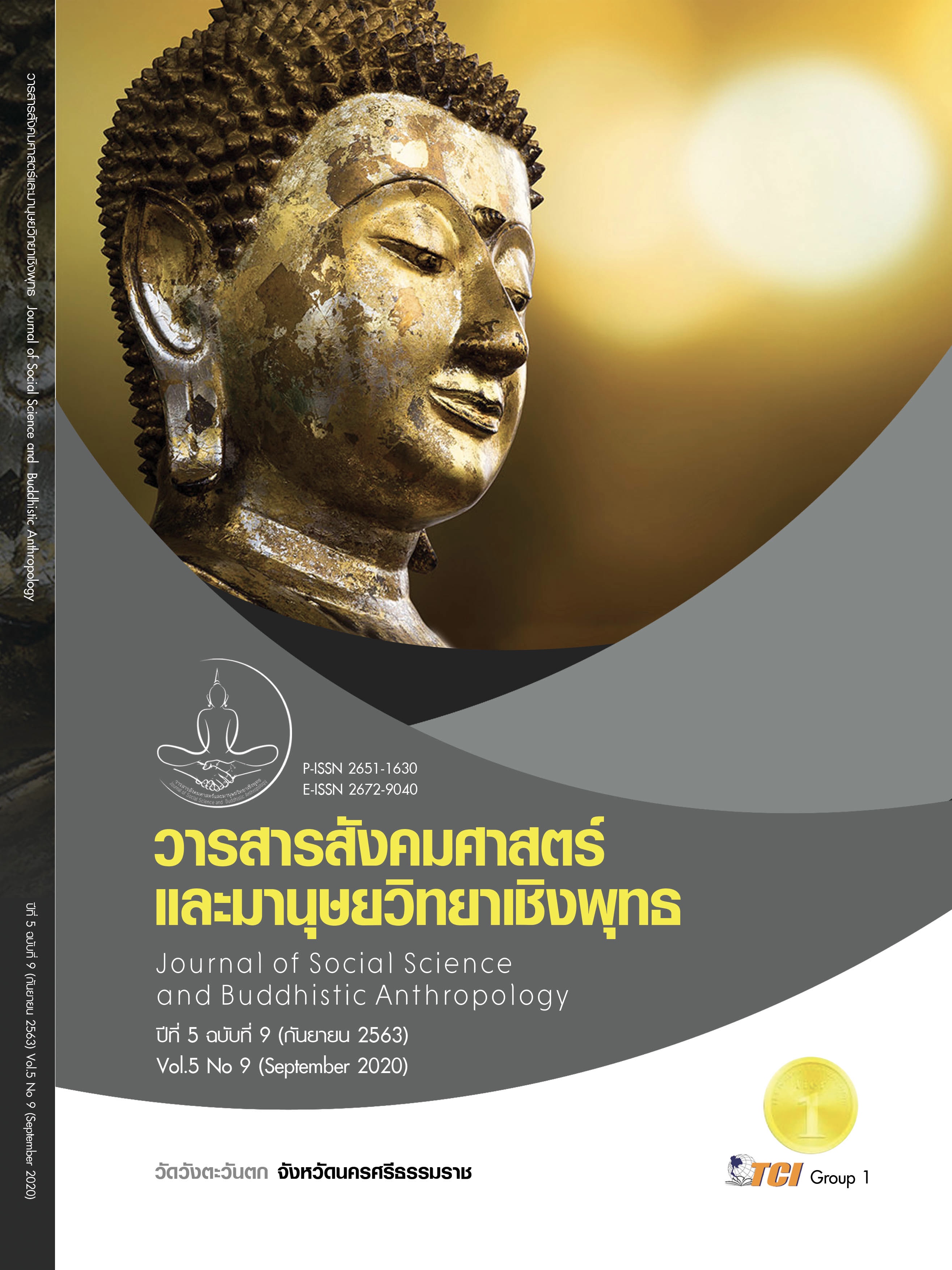บุพปัจจัยเชิงสาเหตุที่ส่งผลต่อผลการปฏิบัติงาน ผ่านความผูกพันต่องาน ของบุคลากรกลุ่มเจนเนอเรชั่นวาย สำนักงานพัฒนาวิทยาศาสตร์ และเทคโนโลยีแห่งชาติ (สวทช.)
คำสำคัญ:
บุพปัจจัยเชิงสาเหตุ, เจนเนอเรชั่นวาย, ความต้องการดำรงอยู่, ความต้องการความสัมพันธ์, ความต้องการเจริญก้าวหน้าบทคัดย่อ
บทความฉบับนี้มีวัตถุประสงค์เพื่อศึกษาบุพปัจจัยเชิงสาเหตุที่ส่งผลต่อผลการปฏิบัติงาน ผ่านความผูกพันต่องานของบุคลากรกลุ่มเจนเนอเรชั่นวาย สำนักงานพัฒนาวิทยาศาสตร์และเทคโนโลยีแห่งชาติ (สวทช.) ประชากรที่ใช้ในการวิจัยนี้คือ บุคลากรเจนเนอเรชั่นวาย ทั้งหมดจำนวน 1,269 คน โดยทำการเก็บแบบสอบถามจากการเลือกกลุ่มตัวอย่างจำนวน 300 คน โดยใช้หลักความน่าจะเป็นและแบบตามสะดวก และทำการวิเคราะห์ข้อมูลด้วยหลักการทางสถิติ 2 ส่วน คือ สถิติเชิงพรรณนา และสถิติเชิงอนุมาน ผลการวิจัยพบว่าแบบจำลองโครงสร้างความสัมพันธ์เชิงสาเหตุของบุพปัจจัยที่มีอิทธิพลต่อผลการปฏิบัติงานผ่านทางความผูกพันต่องาน มีความสอดคล้องกลมกลืนกับข้อมูลเชิงประจักษ์ที่ p - value เท่ากับ 0.050 ซึ่งความต้องการดำรงอยู่ ความต้องการความสัมพันธ์ และ ความต้องการความเจริญก้าวหน้า มีอิทธิพลทางบวกต่อความผูกพันของบุคลากรกลุ่มเจนเนอเรชั่นวายของสำนักงานพัฒนาวิทยาศาสตร์และเทคโนโลยีแห่งชาติ (สวทช.) อย่างมีนัยสำคัญทางสถิติที่ระดับ 0.001, 0.05 และ 0.05 ตามลำดับ มีค่าอิทธิพลเท่ากับ 0.63, 0.02 และ 0.18 ตามลำดับ ที่อำนาจการพยากรณ์ร้อยละ 60 และพบว่าความต้องการดำรงอยู่ ความต้องการความสัมพันธ์ ความต้องการความเจริญก้าวหน้า และความผูกพันต่องาน มีอิทธิพลทางบวกต่อผลการปฏิบัติงานอย่างมีนัยสำคัญทางสถิติที่ระดับ 0.05, 0.05, 0.01 และ 0.01 ตามลำดับ มีค่าอิทธิพลเท่ากับ 0.31, 0.15, 0.21 และ 0.27 ตามลำดับ ที่อำนาจการพยากรณ์ร้อยละ 67 จากงานวิจัยนี้สามารถสรุปได้ว่า ความต้องการดำรงอยู่มีอิทธิพลทางตรงต่อผลการปฏิบัติงานของบุคลากรกลุ่มเจนเนอเรชั่นวาย สำนักงานพัฒนาวิทยาศาสตร์และเทคโนโลยีแห่งชาติ (สวทช.) และมีอิทธิพลทางอ้อมต่อผลการปฏิบัติงานผ่านความผูกพันต่องานมากที่สุด โดยมีค่าอิทธิพลรวมเท่ากับ 0.48
เอกสารอ้างอิง
กรมการปกครอง. (2561). สำนักบริหารการทะเบียน ระบบทางการทะเบียน จำนวนประชากรของประเทศไทย. เรียกใช้เมื่อ 14 พฤษภาคม 2561 จาก http://stat.bora.dopa .go.th /stat/statnew/statTDD
กฤษดา เชียรวัฒนสุข และคณะ. (2560). แรงจูงใจที่มีอิทธิพลต่อผลการปฏิบัติงานของพนักงาน กรณีศึกษา บริษัท ทีโอที จำกัด (มหาชน) สำนักงานใหญ่แจ้งวัฒนะ. วารสารวิจัยมหาวิทยาลัยเวสเทิร์น มนุษยศาสตร์และสังคมศาสตร์, 3(2), 29 - 43.
กัลยา วานิชย์บัญชา และฐิตา วานิชย์บัญชา. (2558). การใช้ SPSS for Windows ในการวิเคราะห์ข้อมูล. กรุงเทพมหานคร: สามลดา.
นทีรัย เกรียงชัยพร และอุทัย เลาหวิเชียร. (2562). ความสัมพันธ์ระหว่างระดับคุณภาพชีวิตงาน ความผูกพันต่อองค์การ และพฤติกรรมการปฏิบัติงานของพนักงานการประปาส่วนภูมิภาค. วารสารรัชต์ภาคย์, 13(30), 71 - 82.
นันทนพ เข็มเพชร และพบสุข ช่ำชอง. (2561). แรงจูงใจในการทำงานของพนักงานสายสนับสนุน ในกลุ่ม Generation Y : กรณีศึกษามหาวิทยาลัยมหาสารคาม. วารสารการเมืองการปกครอง, 8(1), 40 - 63.
สถาบันวิจัยประชากรและสังคม. (2559). รายงานสุขภาพคนไทย 2559. กรุงเทพมหานคร: อมรินทร์พริ้นติ้ง แอนด์ พับลิชชิ่ง.
สำนักงานคณะกรรมการพัฒนาการเศรษฐกิจและสังคมแห่งชาติ. (2556). การคาดประมาณประชากรของประเทศไทย พ.ศ. 2553 - 2583. กรุงเทพมหานคร: อมรินทร์พริ้นติ้ง แอนด์ พับลิชชิ่ง.
สำนักงานพัฒนาวิทยาศาสตร์และเทคโนโลยีแห่งชาติ. (2562). รายงานข้อมูลบุคลากร สวทช. ปทุมธานี: สำนักงานพัฒนาวิทยาศาสตร์และเทคโนโลยีแห่งชาติ.
สุชาติ ประสิทธิ์รัฐสินธุ์. (2551). เทคนิคการวิเคราะห์ตัวแปรหลายตัวสำหรับการวิจัยทางสังคมศาสตร์และพฤติกรมมศาสตร์. กรุงเทพมหานคร: สามลดา.
Azizah A & Gustomo A. (2015). The Influence of Employee Engagement to Employee Performance at PT. Journal of Business and Management, 4(7), 817 - 829.
Dajani M. A. Z. (2015). The Impact of Employee Engagement on Job Performance and Organisational Commitment in the Egyptian Banking Sector. Journal of Business and Management Sciences, 3(5), 138 - 147.
Farooq M. & et al. . (2018). Impact of Service Quality on Customer Satisfaction in Malaysia Airlines: A PLS - SEM Approach. Journal of Air Transport Management, 67(1), 169 - 180.
Hair J. et al. (2010). Multivariate Data Analysis. London: Pearson Education Limited.
Kazimoto P. (2016). Engagement and Organizational Performance of Retails Enterprises. American Journal of Industrial and Business Management, 6(1), 516 - 525.
Kertiriasih N. et al. (2018). The Effect of Leadership Style to Job Satisfaction Employee Engagement and Employee Performance (Study at PT. Interbat, Bali, Nusra, and Ambon). International Journal of Contemporary Research and Review, 9(4), 20592 – 20600.
Khan A. et al. (2018). Factors Affecting Employee Motivation Towards Employee Performance: A Study on Banking Industry of Pakistan. in International Conference on Management Science and Engineering Management. ResearchGate.
Lundberg. et al. (2009). Herzberg’s Two-Factor Theory of work motivation tested empirically on seasonal workers. Tourism Management, 30(6), 890 - 899.
Osborne,S., & Hammoud M.S. (2017). Effective Employee Engagement in the Workplace. International Journal of Applied Management& Technology, 16(1), 50 - 67.
Reijseger, G et al. (2017). From Motivation to Activation: Why Engaged Workers are Better Performers. Journal of Business and Psychology, 3(1), 158 - 167.
Ricardianto P & et al. (2020). How to improve ship crew’s work effectiveness through the leadership style, work life balance and employee engagement in Indonesia national shipping. Management Science Letters, 10(1), 399 - 410.
Saxena, V. & Srivastava, R. (2015). Impact of employee engagement on employee performance - case of manufacturing sectors. International Journal of Management Research and Business Strategy, 4(2), 139 - 174.








